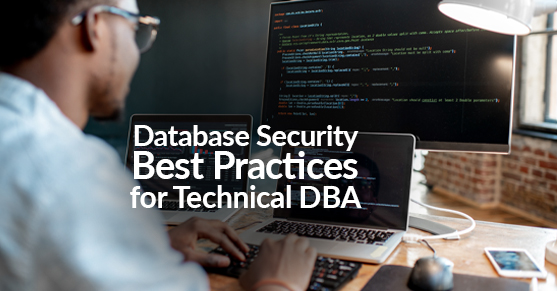As a database administrator (DBA), maintaining the security of your organization’s data is one of your most important responsibilities. Unfortunately, data breaches and other security incidents are too common in today’s digital age, and the consequences can be severe. Therefore, following best practices for database security is essential to help protect your organization’s data and comply with regulatory requirements.
This blog post will review some of the critical strategies and techniques you can use to keep your databases secure.
Implement Strong Authentication and Access Controls
One of the most important aspects of database security is ensuring that only authorized users can access your databases. To achieve this, you should implement strong authentication and access controls. This means requiring users to provide a unique identifier (such as a username or email address) and a secure password or other forms of credentials to log in to your databases. Additionally, it would be best if you used role-based access controls to restrict user access to only the necessary data and functionality to perform their job functions.
Use Encryption to Protect Sensitive Data
Another key aspect of database security is protecting sensitive data from unauthorized access or disclosure. One effective way to do this is to use encryption. Encryption is the process of converting data into code that can only be read by someone who has the decryption key. For that reason, you should encrypt any sensitive or confidential data, such as personally identifiable information (PII) or financial data. You can use several different types of encryption algorithms, including symmetric-key encryption, asymmetric-key encryption, and hashing.
Regularly Backup and Test Your Databases
Regularly backing up your databases and testing your backups is essential for protecting against data loss and ensuring business continuity. Backups allow you to quickly restore data in the event of a security incident or other disaster. You should create regular backups of your databases and store them in a secure location separate from your primary database. Additionally, you should test your backups regularly to ensure they can be successfully restored in an emergency for added database security.
Monitor and Log Database Activity
Monitoring and logging database activity is another critical aspect of database security. You can quickly identify and respond to potential security incidents by monitoring and logging all activity. This includes logging login attempts, data access, data modification, and other activities. You should also set up alerts to notify you of any suspicious activity.
Regularly Update and Patch Your Databases and Software
Finally, keeping your databases and software up to date with the latest security patches and updates is essential for database security. This is especially true for software known to be vulnerable to security exploits. You can protect your databases from known security vulnerabilities by keeping your software up to date.
Conclusion
In conclusion, securing your organization’s databases is an ongoing process that requires continuous effort. Following these best practices can help protect your organization’s data and minimize the risk of a security incident. It’s also vital to stay up-to-date with the latest security trends, threats, and standards in the industry, to be able to adapt your security strategy proactively and provide the most safeguarded database security.
For more information, talk to us today!

